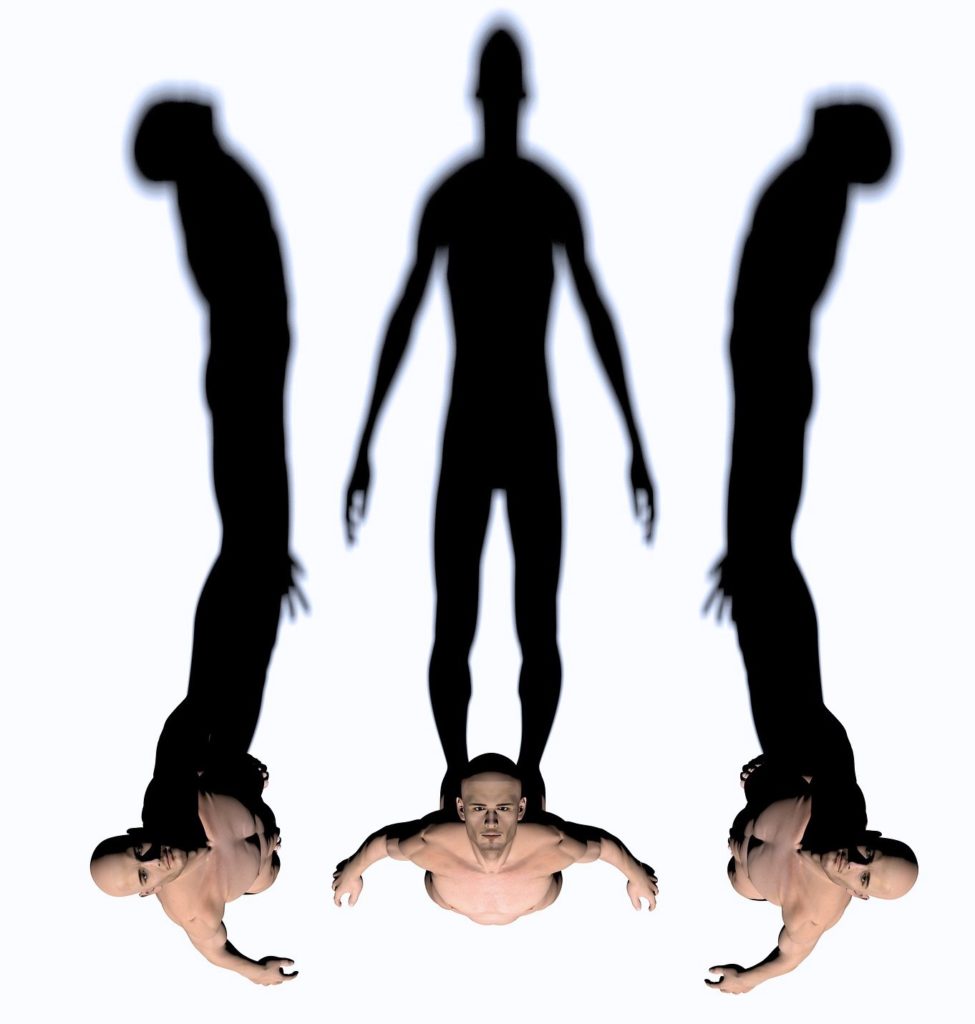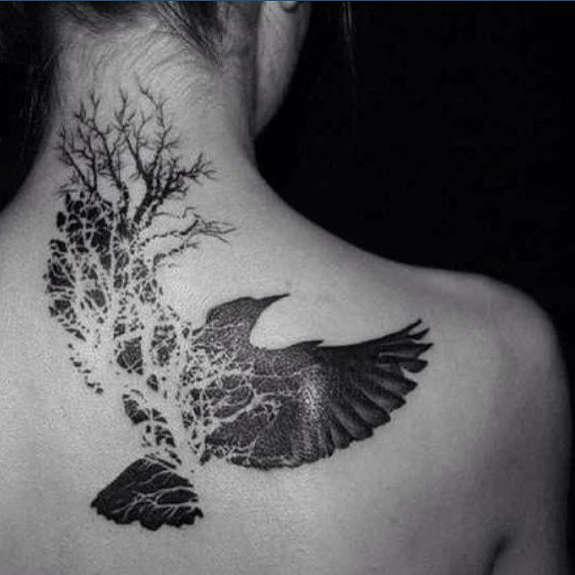
(photo by Issac Quesade/Unsplash)
Is having a child today—or a grandchild—an expression of fervent hope or an involuntary invitation that you’re handing down to someone who’s unable to refuse it?
It’s a fair question, relating to what are (perhaps) our first jobs: as parents, as caregivers, as either believers or non-believers in the world to come.
Because every newborn is an embodiment of hope, our answers make us grapple with the future as we see it today.
These days, Tomorrowland is no longer the Jetsons flying cars from their open-to-the-sky houses with friendly robots inside, impossibly dressed as maids. Today, it seems closer to Cormac McCarthy’s survivalist The Road or last year’s best picture contender, the farcical Don’t Look Up–harsh and cruel on the one hand, shallow and in-denial on the other.
I’d briefly thrown this question out to you before. That post was in the summer of 2017, years before a pandemic disrupted daily life, environmental collapse was something other than science fiction, or we had a 24/7 view of annihilation in a peace-loving country that often looked surprisingly like our own.
Even if you keep shutting off the news for the sake of your sanity, the brain still completes its gloomy pictures. But then we’re reminded, there have been victories too: those nurses in the terrible breach, that rebound in the numbers of whales plying our oceans, those Ukrainians serenading their fleeing breathern with folk songs and accordions in train stations. Bleak with shafts of sunlight I’d call it, but as the tribulation (a biblical word) piles on, still bleaker than it seemed only five years ago when people were already asking: “What if you decide to bring a child into this world? What do you owe her?”
Before reaching for the bottle, perspective helps. This is neither the first nor will it be the last time that the future looks bleak. In 1891, almost 25 years before the catastrophe of World War I, Oscar Wilde did what great artists always do. He looked out and realized that something was tragically missing in a world that was already marching off to war amidst destructive new technologies and social upheavals, with callow leaders and millions of oblivious bystanders along for the ride. As far as Wilde could tell, no one seemed to be envisioning a better world any more, even though that’s the only world any sane person should want to be heading towards. As he said at the time:
A map of the world that does not include Utopia is not worth even glancing at, for it leaves out the one country at which humanity is always heading.
Isn’t utopia the future that we want for our children? Not some nostalgic past that never really existed but a sustainable place with wiser leaders, where humanity is enhanced by its technologies instead of subjugated by them, where we flourish by celebrating our common humanity instead of preying on one another. But none of us will ever reach such of place unless we can imagine it first.
One of my favorite writers is Michael Chabon (check out his marvelous Moonglow if you’ve somehow missed it) and I happened upon an essay of his this week where he (like Wilde before him) looked around, shortly after the turn of a different century, and noticed that something was terribly missing. His queries around “what that was exactly” were prompted by his discovery of an audaciously hopeful scheme that had been launched some time before. It was called the Clock of the Long Now. A tee-up to Chabon’s essay on Longreads described the powerful response that a few visionaries had made to “a disappearing future”:
One of the grandest gestures toward imagining the future is the Clock of the Long Now. Originally conceived by inventor, computer scientist, and Disney Imagineering fellow Danny Hillis, and expected to cost in the tens of millions of dollars, the clock is designed to keep time for 10,000 years. Besides being a tremendous feat of engineering, it’s also a tremendous statement of faith — building it is a bet that there will be humans around over the next 10 millennia to hear its bells ring.
To Chabon, the Clock of the Long Now seemed a utopian commitment, not to a destination on a map but to something that feels just as bold today: that we, our children and our children’s children actually have “a Long Now” stretching before us.
As Chabon quickly understood, the point of this invention was not to measure our passage of time into an unknown future or to celebrate the strange race of creatures that built it. No, it had little to do with our time-keeping or technical wizzardry. “The point of the Clock,” he writes, “is to revive and restore the whole idea of the Future.”
‘The Future,’ whether you capitalize it or not, is always just an idea, a proposal, a scenario, a sketch for a mad contraption that may or may not work. ‘The Future’ is a story we tell, a narrative of hope, dread or wonder. And it’s a story that, for a while now, we’ve been pretty much living without….
Can you extend the horizon of your expectations for our world, for our complex of civilizations and cultures, beyond the lifetime of your own children, of the next two or three generations? Can you even imagine the survival of the world beyond the present presidential administration?
No, we probably can’t—or think we can’t. But the Clock of the Long Now wants to recover that loss, quite literally, as an emblem of belief in horizons that extend beyond the screens that we’re holding in our hands and their always-in-the-present diversions.
Chabon laments that Americans (as a culture and a country) are no longer caught between the poles of “the bright promise and the bleak menace.” Now (and he wrote this 15 years ago) we seem to have mostly the latter and little of the former. I think it’s one reason why we’ve been so gobsmacked by the nobility of Ukraine’s resistance in the face of barbarism—all of these people (where did they come from?) so full of “the promise” in spite of “the menace.”
Asking similar questions, he ends up thinking about his young son, with a tremendous sadness, given how different Chabon’s own speculations about The Future had been when he was that age:
If you ask my eight-year-old about the Future, he pretty much thinks the world is going to end, and that’s it. Most likely global warming, he says—floods, storms, desertification—but the possibility of viral pandemic, meteor impact, or some kind of nuclear exchange is not alien to his view of the days to come. Maybe not tomorrow, or a year from now. The kid is more than capable of generating a full head of optimistic steam about next week, next vacation, his tenth birthday. It’s only the world a hundred years on that leaves his hopes a blank. My son seems to take the end of everything, of all human endeavor and creation, for granted. He sees himself as living on the last page, if not in the last paragraph, of a long, strange and bewildering book. If you had told me, when I was eight, that a little kid of the future would feel that way—and that what’s more, he would see a certain justice in our eventual extinction, would think the world was better off without human beings in it—that would have been even worse than hearing that in 2006 there are no hydroponic megafarms, no human colonies on Mars, no personal jetpacks for everyone. That would truly have broken my heart.
So in response, Chabon tells his son about the Clock of the Long Now, and while he did so his son “listened very carefully” before asking, “Will there really be people then, Dad,” ten thousand years from now? “’Yes,’ I told him without hesitation, ‘there will,” [although, to himself] I don’t know if that’s true.” Chabon confirmed this Truth to his boy because he felt that he didn’t really have a choice in the matter. “[I]n having children—in engendering them, in loving them, in teaching them to love and care about the world—parents are betting, whether they know it or not, on the Clock of the Long Now.”
Just think about that for a minute. What you believe, what you hope, and how you’d answer that child, who embodies “a far longer now” than you do, when she begins to wonder about what lies ahead.

Doomsday scenarios around climate catastrophe have lent a powerful sense of urgency to questions around giving birth or refusing to do so. If what’s ahead are more devastating floods, wildfires, famines, mass migrations, ferocious competitions over scarce resources, and increasing strife among nations, it sometimes appears that all we have to look forward to is an even more Hobbsian world of tooth and claw–and no place for children.
In my own travels through this quandary, I couldn’t help but notice that there are hundreds of articles out there trying to find the “fairness” to future children in our having them today, with most concluding that we should forego childbearing altogether. In particular, these debates have been catnip for philosophers, with one in The New Republic (“Is It Cruel To Have Kids In the Era of Climate Change”) beginning his take on it this way:
In one of his early works, the nineteenth-century German philosopher Friedrich Nietzsche relayed an Ancient Greek legend about King Midas pursuing the satyr Silenus, a wise companion of the god Dionysus. When Midas finally captures Silenus, he asks him what ‘the best thing of all for men’ is. ‘The very best thing for you is totally unreachable,’ Silenus replies: ‘not to have been born, not to exist, to be nothing.’
If that were in fact true it would simplify matters enormously, not only for those of us who are here now but for all the rest who might be coming. But is it really this black and white?
In a different essay, another philosopher (who specializes in the “ethics and metaphysical issues regarding birth, death and meaning”) invites us to weigh the plausible (as opposed to existential) risks that are facing both us and that future child.
Against “the near-certain” threat of a “global warming apocalypse” today, she recalls the failed predictions of Thomas Malthus in 1798 that a human population boom would outstrip the world’s food supply (“Imagine if everyone decided to stop having children back then to avoid the ‘inevitable’ famine?), and somewhat more humorously, The London Times’ prediction in 1890 that by 1940 there would be so much manure piling up after the horse drawn carriages that “every street in London would be buried in nine feet of manure.” (“Imagine if people had decided it was wrong to create a child to wade through the muck?”). As a result, her analysis concludes more equivocally than Silenus’s. Her “tipping point” for the question ‘Is life a worthwhile risk?” is whether or not you happen to believe the climate-related forecasts.
And I suppose to some extent that’s true. But it leaves us (unhelpfully) in the middle of the climate believer/denier debates, when I think what we need is a sign post that will get us to a more enabling place, to help us decide the matter “in our hearts” (if you will), that brings us to a stand that’s more embedded in human nature than in risk analysis as we consider whether “bringing a child into a world like this” is justifiable.
Which brings us back to Nietzche. Because, as the New Republic essayist eventually tells us, the great German philosopher didn’t agree with the answer that the satyr Silenus gave to King Midas. In Nietzche’s worldview, you should never wish that you hadn’t been born, nor should you refuse to bring children into the world because of the miserable state in which you currently find it.
To some extent, this is because living has always involved both tragedy and triumph. Only today, amidst the cosseting and complacency of a society as rich as ours do we seem to have forgotten this basic tension in our existence. (Before Nietzche and long before Amazon and the Metaverse believing people called these deeply human realities “sin” and “grace.”)
So the Nietzche readers among you will also recall his “Will to Life,” his “triumphant Yes” to the question of human existence, his “affirmation of life even in its strangest and sternest of problems.” To be human is always to struggle to find ways to affirm the force of our lives in the full knowledge that death is also roaming among us.
That’s maturity. That’s what every parent who should be a parent understands.
As they make it “their own work” to fight against what’s unfair and unacceptable, these parents teach their children by their examples, standing right there alongside of them as their kids learn how to do the same thing.
These parents believe in The Future, which is why they answer “Yes” (without hesitating) when they’re asked, “Will there be a future ten thousand years from now?” even though we can never be sure. That hope is always tentative, contingent, and we’re big enough to handle its uncertainties.
All that good parents can be sure of is that they’ll be standing next to that child while he or she begins to claim his or her part of it, that no child in this family will ever have to face The Future alone. Likewise, it’s a standing-on-shoulders legacy that can continue as long as the young and their nurturers are giving a “triumphant Yes” to whatever tomorrow holds in the overlapping work of their lives.
Yes!, even when our streets are clogged with nine feet of sh*t and the warm sun of springtime has just come out.
This post was adapted from my April 24, 2022 newsletter. Newsletters are delivered to subscribers’ in-boxes every Sunday morning and sometimes (but not always) I post the content from one of them here. You can subscribe and not miss any of them by leaving your email address in the column to the right.











